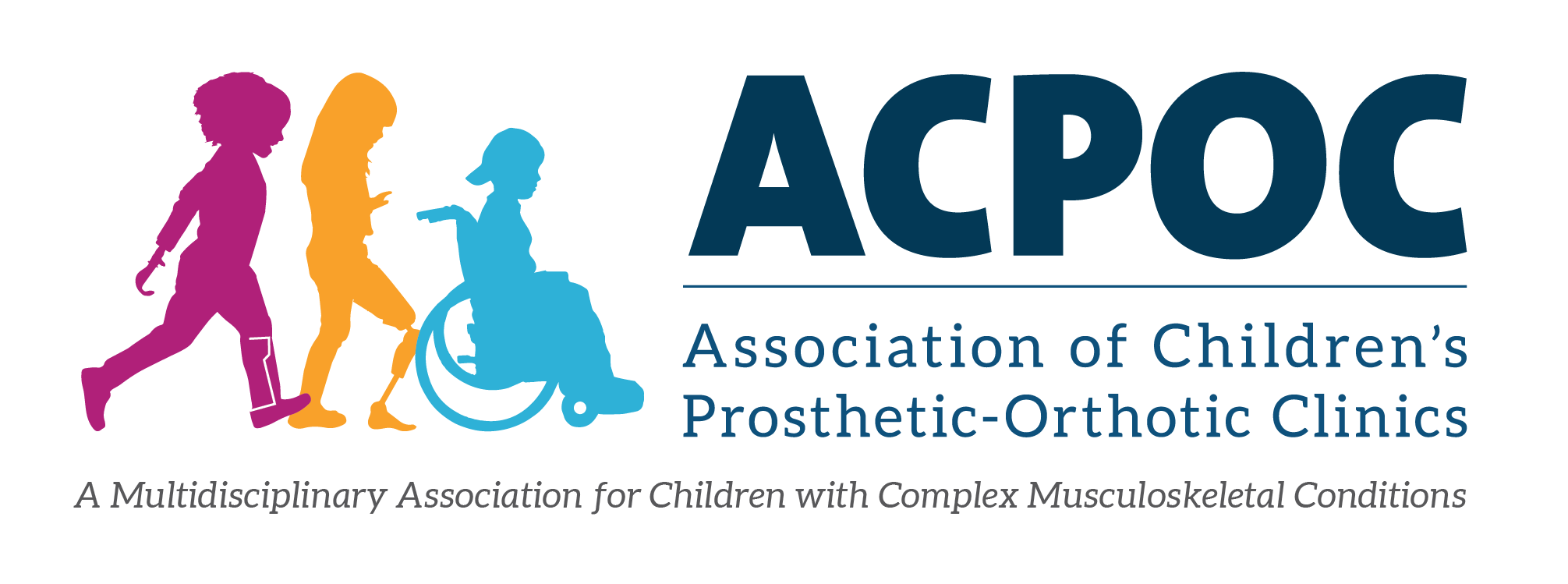OUR HISTORY

Association of Children’s Prosthetic-Orthotic Clinics
In 1946, Dr. Carlton Dean, a physician with a Master’s degree in Public Health met with Dr. Charles H. Frantz and Dr. George T. Aitken to organize a Juvenile Amputee Program for Michigan. The objective was to fit the best device available, and to instruct the usage of the prosthesis. For several years during WWII, Dr. Dean was aware that child amputees were fitted with prostheses that were rejected as being inadequate or uncomfortable. He was determined to remedy this situation. During the next several years, they found that prosthetic needs of children differed age to age and reported that the child was not a miniature adult to whom adult principles and modes of fitting could be applied.
The Juvenile Amputee Training Program was the responsibility of doctors Frantz and Aitken. Initially most of the children had acquired amputations, but by the end of the first ten years, half of the child amputee census was congenital. It eventually became apparent that the team approach pioneered in the military hospitals for adult amputees worked well, and this concept should also be applied to the care of the child amputee. In 1954 the need for an organized approach to the management of juvenile amputees across the country was discussed at a meeting in Grand Rapids, Michigan.
In January, 1954, a meeting was held in Grand Rapids, Michigan, to develop strategy for a national juvenile amputee management program. As a result, General F. S. Strong, Chair of the Prosthetics Research Board, appointed an interim Committee in Child’s Prosthetic Problems in December, 1955. This committee of ten members, under the chair of Dr. Charles H. Frantz, had its first meeting in November, 1956, at UCLA, at which time it was made a permanent committee of the Prosthetics Research Board.
In 1959, the committee was transferred to the Committee on Prosthetics Research and Development of the National Research Council/National Academy of Sciences, at which time it became the Sub-Committee on Child Prosthetic Problems. Dr. Frantz continued to chair the sub-committee until 1967, when Dr. George T. Aitken assumed the chair.
During these early years, the primary functions of the sub-committee were to evaluate experimental components, to disseminate information by publications and conferences, and to establish criteria for clinics wishing to participate in the cooperative Clinic Chief’s Program, thereby raising the standards of children’s prosthetic care in the United States.
The Interclinic Information Bulletin was first published in October, 1961, by the Child Prosthetic Study program at New York University and has been a most valuable means of communication between the cooperating clinics. This continued as JACPOC, Journal of the Association of Children’s Prosthetic-Orthotic Clinics, which has ceased publication.
Four major symposia were sponsored by the sub-committee and the proceedings were then published under the auspices of the National Research Council of the National Academy of Sciences.
- Normal and Abnormal Embryological Developments: Charles H. Frantz, Editor, held in Chicago, 1966.
- Proximal Femoral Focal Deficiency: A Congenital Anomaly: George T. Aitken, Editor, held in Washington, DC, 1968.
- Selected Lower Limb Anomalies: Surgical and Prosthetic Management: George T. Aitken, Editor, held in Washington, DC , 1969.
- The Child With an Acquired Amputation: George T. Aitken, Editor, Held in Toronto, Ontario, 1970.
In the early 1970’s CPRD charged the sub-committee with enlarging its sphere of activity to include children’s orthotics and mobility aids. Also during this period, under the guidance of Hector Kay, Assistant Executive Directory of CPRD, the sub-committee expanded its conferences to include the cooperating clinic chiefs and their staffs at annual meetings hosted by a selected clinic. This format, which began in 1972, continues to this day. In 1972, Dr. Aitken turned over the chair of the sub-committee to Dr. Leon Kruger.
In 1976, The Committee on Prosthetics Research and Development, as well as the sub-committee, were disbanded by the National Research Council/National Academy of Sciences. As a result, no meeting was held in 1977, but during this time an unsponsored ad-hoc committee functioned to lay the groundwork for a new organization to continue the exchange of information in the area of children’s prosthetics & orthotics.
At the Grand Rapids meeting in 1978, the history of the organization was reviewed and it was recommended by the ad-hoc committee that a free-standing organization be created. This proposal received unanimous approval by the clinic chiefs.
In 1979, at the Memphis meeting, officers were elected and a committee appointed to develop a constitution and by-laws. The by-laws were approved during the 1980 meeting in New Jersey and thus the present Association of Children’s Prosthetic-Orthotic Clinics came into being.
Currently, the Association of Children’s Prosthetic-Orthotic Clinics is an international organization that meets annually at a member clinic host’s city either in the United States or Canada. The ACPOC mission is to promote interdisciplinary team development and collaboration, support research in children’s prosthetic-orthotic care, disseminate information to children’s clinics and improve the lives of patients and their families through education. This diverse network of professionals is based upon mutual respect of each discipline’s expertise that contributes to the treatment of the complex problems of the physically challenged. ACPOC continues to grow in membership and in contributions to the advancement of management for children with amputations, orthopaedic, and neuromuscular needs.
